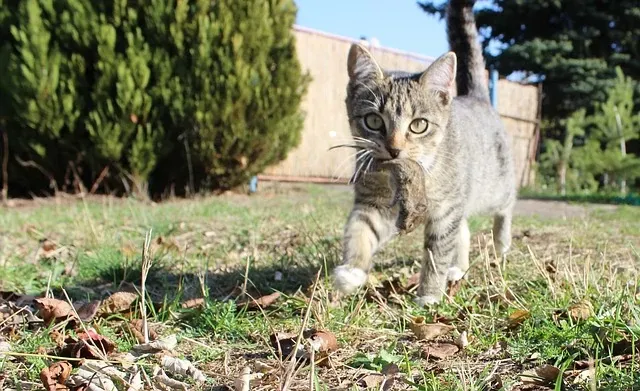The Cat’s Unique Physiological Adaptations to Carnivory
In addition to genetic, behavioural and anatomic adaptations, house cats also show around 14 physiological adaptations as obligate carnivores. When compared with the physiology of their closest wild progenitors, it becomes clear that domestic cats have retained all of their carnivore mechanisms.

The previous two blog posts focused on the house cat’s fascinating heritage as strict or obligate carnivores. Firstly, Are House Cats Still Carnivores? answered this question in some depth.
Meet the Wild Ancestors of the House Cat looked at their genetic wildcat ancestry and explored their closest wild progenitors.
Where’s the Proof that House Cats are Strict Carnivores? looked at the house cat’s wide array of special adaptations – genetic, anatomic and behavioural – to an all meat diet.
This post looks particularly at the adaptations in the cat’s biology as the final tier of proof of their status as true carnivores.
The distinctive physiology of the cat
James G. Morris, molecular bio-scientist and professor of biology, refers to the distinct characteristics of domestic cats as idiosyncratic, evolutionary and dietary induced adaptations that stem from strict carnivory 1.
Modern domestic cats are quite remarkable. They have retained all of their hyper carnivorous mechanisms from their wild progenitors for food selection 2.
...without further ado, the 14 most salient adaptations:

...why these very unique adaptations?
Well, throughout their evolution, cats increasingly specialised as hunters 3. In order to hunt efficiently and run lightning fast, their bodies had to shed any and all excess weight – even from their internal organs.
These deletions enable them to go after their main source of fuel – prey animals. They collectively assisted in cats developing into light framed hunting machines. Very cool.
...the feeding solution to these unique dietary requirements
To meet each and every one of the dietary requirements brought about by their distinct adaptations, house cats need to eat what their ancestors ate – fresh, unprocessed meat.
...this list of adaptations concludes the discussion of Ancestry
Four blog posts collectively discussed the domestic cat’s unique characteristics as obligate, hyper or strict carnivores. It discussed their classification, genetic heritage, anatomy, behaviour and the various adaptations to hyper carnivorism.
...what's next?
The Next post Why do Cats Love Commercial Foods so Much? considers the suitability of commercial cat foods to a cat’s biology. What should House Cats Eat? And why? might interest you as it looks at what house cats should ideally be eating for good health and longevity.
Finally, Can Cats Eat a Vegan Diet? is a two-part discussion that examines how suitable a vegetarian diet is for the domestic cat. It also looks at the ethical considerations of this dietary ideology.


References
1 Morris, J.G. (2002). Idiosyncratic nutrient requirements of cats appear to be diet-induced evolutionary adaptations. Nutrition Research Reviews, 15, 153 – 168.
2 Bradshaw, J.W.S., Goodwin, D., Legrand-Defrétin, V. & Nott, H.M.R. (1996). Food selection by the domestic cat, an obligate carnivore. Comparative Biochemistry and Physiology Part A: Physiology 114(3), 205 – 209.
3 Animal Wellness Summit (2019, March 20). Live conference on epigenetics with Barney Kuntze and Madeleine Innocent [Video]. Youtube. https://www.youtube.com/watch?v=zsCXf6OPqL4
Information for the 14 facts cards summarised from:
Morris, J.G. (2002). Idiosyncratic nutrient requirements of cats appear to be diet-induced evolutionary adaptations. Nutrition Research Reviews, 15, 153 – 168.
Morris, J.G. (2001). Unique nutrient requirements of cats appear to be diet-induced evolutionary adaptations. Recent Advances in Animal Nutrition in Australia, 13, 187 – 194.
Plantinga, E.A., Bosch, G. & Hendriks, W.H. (2011). Estimation of the dietary nutrient profile of free-roaming feral cats: Possible implications for nutrition of domestic cats. British Journal of Nutrition 106, S35 – S48.
Raw Feeding for IBD Cats (n.d.). Feline nutrition in inflammatory bowel disease. Retrieved November 18, 2021, from https://www.rawfeedingforibdcats.org/feline-nutrition-in-ibd.html
Li, X., Li, W., Wang, H., Bayley, D.L., Cao, J., Reed, D.R., Bachmanov, A.A., Huang, L., Legrand-Defretin, V., Beauchamp, G. K. & Brand, J.G. (2006). Cats lack a sweet taste receptor. The Journal of Nutrition, 136(7), 1932S; https://doi.org/10.1093/jn/136.7.1932S
Bradshaw, J.W.S., Goodwin, D., Legrand-Defrétin, V. & Nott, H.M.R. (1996). Food selection by the domestic cat, an obligate carnivore. Comparative Biochemistry and Physiology Part A: Physiology 114(3), 205 – 209.
Dickinson, P.J., Anderson, P.J.B., Williams, D.C., Powell, H.C., Shelton, G.D., Morris, J.G. & LeCouteur, R.A. (2004). Assessment of the neurologic effects of dietary deficiencies of phenylalanine and tyrosine in cats. Medical Journal of Veterinary Science, 65(5), 671 – 80.
Disclaimer
The information provided on the Bestfedcats.com website is educational and informational. We are here to give guidance on how to feed a properly balanced raw diet. We also offer advice on how to improve the diet of the modern house cat. Please note that we are not veterinarians. We are not here to give veterinary advice. Best Fed Cats will not be held responsible for any adverse reactions to your cat based on the information on our website. The health of your cat depends entirely on you. We expect you to use your knowledge of your cats, their circumstances and their health – in conjunction with a trusted veterinarian – to determine if any advice provided on this site is appropriate for your cats.

